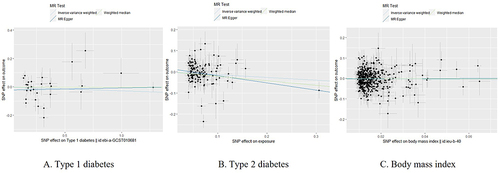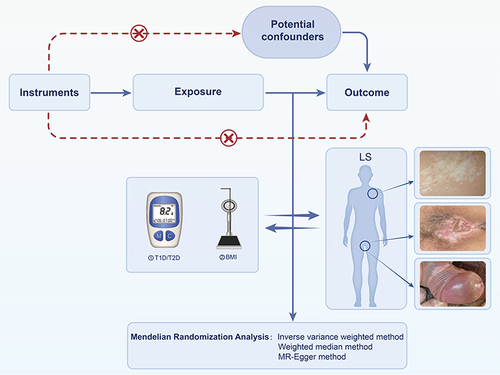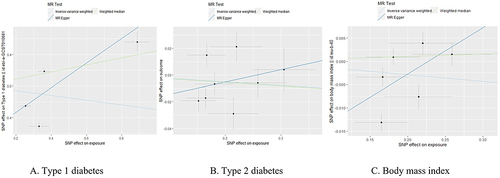Figures & data
Table 1 Details of GWAS Used for Exposures and Outcomes.
Table 2 The Causal Effect of (A) T1D, (B) T2D, and (C) BMI on Lichen Sclerosus.
Figure 2 Scatter plots visualizing the Mendelian randomization (MR) estimates of the different exposures ((A): Type 1 diabetes; (B): Type 2 diabetes; (C): Body mass index) with the outcome (lichen sclerosus). Inverse-variance weighted (IVW), MR-Egger, and weighted median methods were the main estimators of the analysis.

Table 3 The Causal Effect of LS on (A) T1D, (B) T2D, and (C) BMI.


